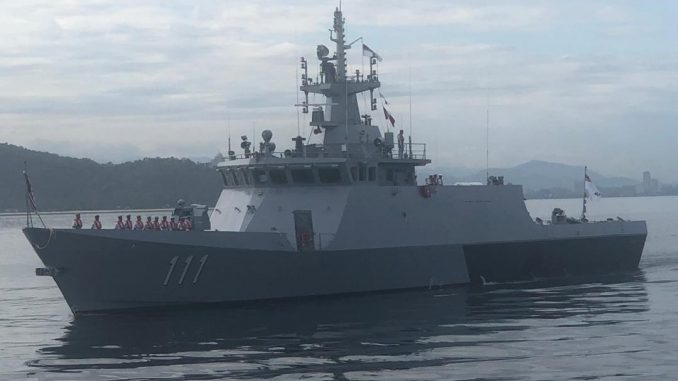
SHAH ALAM: LMS classification. The Keris-class Littoral Mission Ship (LMS) comply with the Rules of Classification of Naval Ship 2016 (RCSNS 16) issued by China Classification Society (CCS), a member of the prestigious International Association of Classification Societies (IACS).
What is a classification society then? According to the Maritime Connector,
it is a non-governmental organisation in the shipping industry, a classification society establishes and maintains technical standards for construction and operation of marine vessels and offshore structures. The primary role of the society is to classify ships and validate that their design and calculations are in accordance with the published standards.
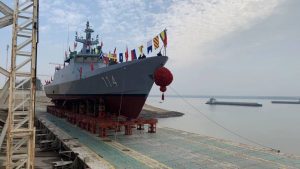
According to Boustead Heavy Industries Corporation (BHIC), the ships are capable of carrying out multi-mission roles and operating in all weather conditions. BHIC issued a release on the launch of the LMS today. a week after the RMN made the announcement. As the contractor to the government, BHIC is obliged to only make a release on its contract after prior approval.
BHIC release:
BHIC Announced the Completion of Its Final of Four KERIS-class Littoral Mission Ship (LMS4)
KUALA LUMPUR, December 23, 2020 – Boustead Heavy Industries Corporation
Berhad (BHIC), a subsidiary of Boustead Holdings Berhad, is proud to announce that
its associate company, Boustead Naval Shipyard (BNS), has launched the fourth
KERIS-class Littoral Mission Ship (LMS4) belonging to the Royal Malaysian Navy
(RMN) on 16 December 2020.LMS4 is the final of four units of LMS built in China by the Wuchang Shipbuilding
Industrial Group Shipyard (WSIG). The 68.8 meter-long ship with Pennant Number
114 entered the water in a ceremony held at WSIG’s facility in Wuhan, China and is
ready to undergo a series of Harbour Acceptance Tests and Trials (HATs), and
subsequently Sea Acceptance Tests and Trials (SATs).LMS4 will be named at a special ceremony during its Physical Handing-Over to the
RMN, scheduled in November 2021. It will join RMN’s 11 th Patrol Vessel Squadron,
together with Kapal Diraja KERIS (LMS1), SUNDANG (LMS2) and the yet-to-be-
named LMS3.All four units of the LMS comply with the Rules of Classification of Naval Ship 2016
(RCSNS 16) issued by China Classification Society (CCS), a member of the
prestigious International Association of Classification Societies (IACS). These ships
are capable of carrying out multi-mission roles and operating in all weather
conditions.The LMS is a new class of RMN warships that will bolster Malaysia’s maritime
defence, as part of the RMN’s 15to5 Transformation Programme to replace current
warships and create an efficient, fit-for-purpose Fleet, in which RMN plans to have
18 units of LMS.The LMS will be a significant addition to enhance RMN’s capability to conduct naval
operations, enforce Malaysia’s maritime law to safeguard its economic and strategic
interests, secure its vast maritime borders and promote naval diplomacy.BHIC Chairman, Admiral Tan Sri Dato’ Seri Ramlan Mohamed Ali (Retired) said
BHIC is proud of its contribution to the Nation’s maritime defence through the LMS
Programme. “The successful launchings of all 4 LMSs and the on-time handing-over
of Kapal Diraja KERIS to the RMN is a clear result of the very close working
relationship between RMN and BNS personnel tasked to oversee the Programme in
China. With our proven track record, we are hopeful of participating in the
subsequent batches of the LMS projects”, he said.
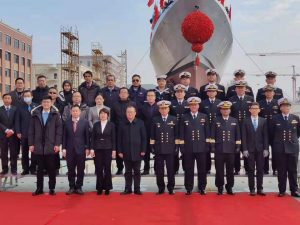
— Malaysian Defence


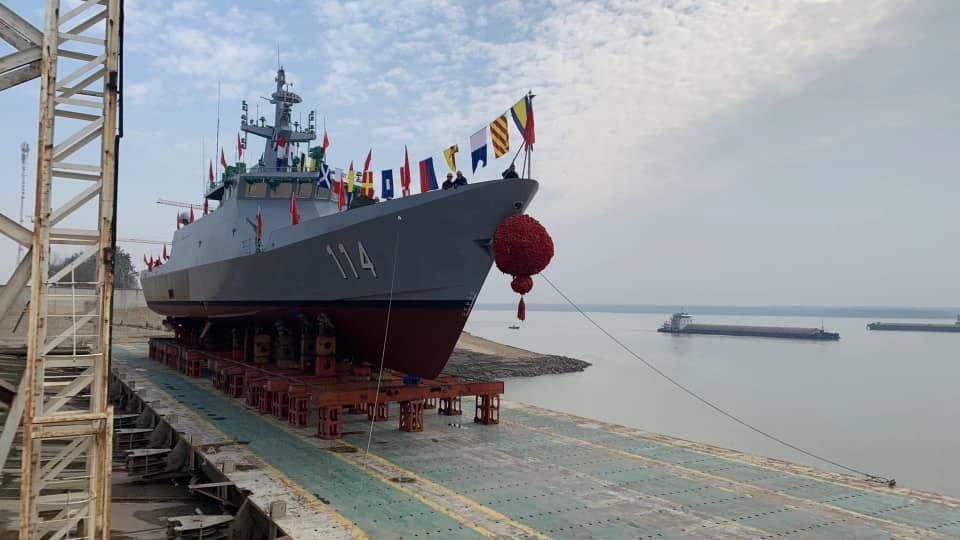
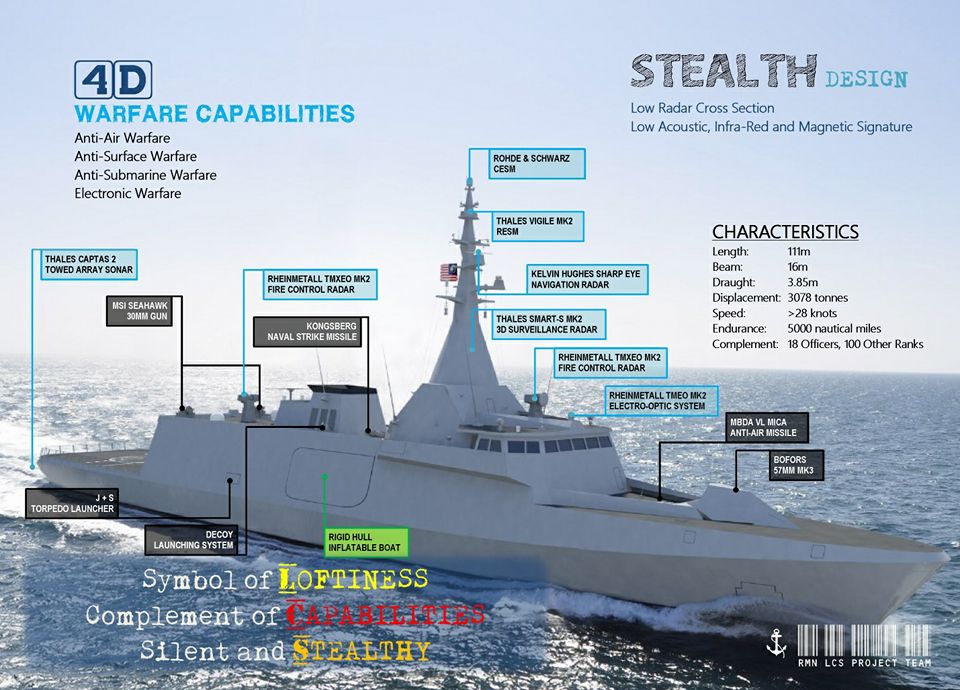
It is cringeworthy to read BNS boasting about “proven track record” when the Gowinds is nowhere near completion.
The one with the proven track record to build the LMS68 is Wuchang Shipyard, not BNS.
LMS batch 2 to be decide on 2021?
Personally im eager to find out about the mrss, i hope the project will go through
Somebody taking credit for works that they never done.
Marhalim,
What’s with the recent reports about problems with the LMS? Did you say it is something to do with the positioning of the radar, but nothing serious?
Reply
I am not purview to the report
“BHIC is proud of its contribution to the Nation’s maritime defence through the LMS Programme. ”
Yeah proud for ships that are overpriced, small, short range and could not accomodate helis plus RMN said theh have problems with those chinses electronics.
Even our current training ships, Gagah Samudera class is ‘better’ ie longer range and could accommodate heli with spaces for SSMs and RAM for less than usd40 milliom each. RMN (or should i say najib) should go for more Gagah Samudera class for LMS from the beginning
https://www.malaysiandefence.com/pcu-gagah-samudera/
“With our proven track record”
You are just the middle man BHIC, look at LCS project so those credits should be given to CSIC. Someone is day dreaming.
“we are hopeful of participating in the
subsequent batches of the LMS projects”
No no no please not again. Gov and RMN must give the next LMS batch to be build by shipyards other than BNS/BHIC
Luqman – ”RMN said theh have problems with those chinses electronics.”
It’s common for problems to be encountered on newly delivered ships; whether those ships are made in the U.K. or China. It doesn’t indicate anything fundamentally wrong with a ship and what’s important are those problems are detected whilst the ship is still under a period of warranty which obligates the yard to fix those problems.
Local companies taking credit for things which they shouldn’t be given credit for is nothing new. DEFTECH use to run full page ads listing its ”products” : T-84, Caesar,. Supacat, etc, etc. If one didn’t know any better; one could be forgiven for thinking they were actually DEFTECH products. DEFTECH use to promote the AV-4 but it was wholly designed by a South African.
@ luqman
i have said here before.
If you want and need to have OPVs, need large lumbering ships with helicopters, then the LMS is not what you want. Build truly OPV designs and give them to MMEA.
Its like ordering nasi lemak but expecting it to taste like nasi goreng.
Also OPVs by any name should be a task for MMEA.
IMO LMS should not be, and must not be an OPV.
LMS IMO should be a littoral combat ship par excellence. Fighting and maintaining superiority over insurgents and non state actors in fast small crafts, should be a main capability and mission of a LMS.
It should be something of a FAC(M) but for the next generation, with significantly different mission priority. FAC(M) is a fast small craft made for surprise attacks of larger ships. LMS should be a fast small craft made to take the fight to swarms of FIAC, FIC, CB90, suicide boats and the like.
https://www.malaysiandefence.com/lcs-team-meets-opv/#comment-417572
… – “Fighting and maintaining superiority over insurgents and non state actors in fast small crafts, should be a main capability and mission of a LMS.”
That’s one of its projected roles in the event we ever face such a threat; at the moment we don’t and are unlikely to. One can also argue that should a non state sea threat ever arise; the MMEA should also be able to handle it – depending on the threat level (such a role was foreseen as one of its roles when it was formed and was also the reason some Marine Police boats had 20mm cannons.
It’s “main” role as projected by RMN planners is to conduct various types of roles – in varying operational conditions – which don’t require a frigate. For such roles; planners also foresee them operating alongside frigates and other assets should a need arise.
… – “FAC(M) is a fast small craft made for surprise attacks of larger ships”
Going back to the S-Boat and MTB era; such boats were originally intended to hunt merchant shipping in close, confined waters. Then their role expenses to include mine laying, convoy escort and other things.
Starting in the late 1950’s/early 1960’s the Soviets started looking at then as a means of limited sea denial; whether against larger naval surface unit; against similar sized vessels or merchant shipping.
It was this rationale which lead us to the Perkasas and later the FACs during a period when we were unwilling and unable to operate more than 2-4 frigate sized combatants. Unfortunately unlike the case with the FACs; not much info is available on the Perkasas beyond the fact they were expensive to run on account of their engines; had wooden hulls and had their torps replaced by SS-11s (our first missile).
@Luqman
A point to note, it took Wuchang shipyard to come out with 4 units LMS much faster than we did with the Samuderas despite being Covid Ground Zero, and without all the dramas. Yeah, FYI we also faced delayed and project stoppages for the Samuderas. Wanna go a second round with that, right when LCS is also facing trouble? wink wink.
@…
“LMS should be a fast small craft made to take the fight to swarms of FIAC, FIC, CB90, suicide boats and the like.”
As well as patrolling, SAR etc which constitutes 80% of the job of LCS as envisioned by RMN which is still vague. IMO LMS must be able to do most of what LCS can expect for ASW and medium range AAW hence why i mentioned the Gagah Samudera.
@Azlan
“Local companies taking credit for things which they shouldn’t be given credit for is nothing new.”
Thank for this info. Wonder how what the end user was thinking if they saw that blatant lie.
Luqman – “As well as patrolling, SAR etc which constitutes 80% of the job of LCS as envisioned by RMN N which is still vague“
There is nothing “vague”. Each class has various wartime and peacetime roles. Just like how LCAs are intended for roles which don’t require a MRCA; same goes for the LMS and LCS.
Luqman – “LMS must be able to do most of what LCS can expect for ASW and medium range”
It is intended to do so – for certain roles – in a slightly different operational setting. Being less well equipped; the LMS will obviously be deployed in circumstances which suit its abilities. There will be instances where it will operate alongside other assets. All depends on the operational circumstances.
Luqman – “W hence why i mentioned the Gagah Samudera.”
The RMN has long decided that a LMS must be of a certain size/displacement. The intention is to totally do away with “FACs” per see or “FAC” sized vessels in account of limitations inherent with vessels that size.
@Azlan
“One can also argue that should a non state sea threat ever arise; the MMEA should also be able to handle it”
Agreed. MMEA is not only task for peace time patrols but also engaging non state actors alongside RMN.
“It’s “main” role as projected by RMN planners is to conduct various types of roles – in varying operational conditions – which don’t require a frigate. ”
Hence why LMS should do most of what a frigate could do except for ASW with TSA/bow mounted sonar and AAW more than 10-15km away
@…
“If you want and need to have OPVs, need large lumbering ships with helicopters, then the LMS is not what you want. Build truly OPV designs and give them to MMEA.”
I was comparing between LMS68 and Gagah Samudera and argued that the Gagah Samudera is a better option than LMS68 due to the merits i listed. Does a ‘truly OPV’ ship armed with SSMs and SAMs and helos be considered as an OPV? Does a 400-800 ton ship either armed or unarmed with long endurance be cosidered as ‘truly OPV’ as well? Well it depends on the person’s perspective. RMN envisioned LMS as a combination of a corvette, OPV and FAC irrespective of size as long as it is smaller and cheaper to operate than LCS. Hence there is no wrong with yours or my LMS. It is just a preference. With the recent RFPs by RMN as reported by Marhalim, the next LMS would probably tend towards Gagah Samudera’s size. Also, can your ‘faster and nimbler’ 30knots LMS catch up a 40-50 knots boats/FICs? Well it can reach a place faster than a 24knots ships thats for sure.
Luqman – “. Also, can your ‘faster and nimbler”
“Fast” and “nimble” are always useful things to have but the jet to everything is early detection/warning. Against a “swarm” of small craft or suicide USVs (threats we don’t face and are unlikely to actual geo-political factors) even a 3,000 frigate – if forewarned – could manoeuvre into an advantageous position to bring its weapons to bear or to place itself in other tactically advantageous positions.
The LMS has a shallower draught so it can go to certain places (assuming there was a need) a ship with a deeper draught can’t. Being smaller then a frigate; it would be more “nimble”; a useful asset if it found itself in such a scenario.
The LMS are required by the RMN. I am sure many Fac n payrol vessel Captains would have had the opportunity to experience the fierce pounding of the seas during the monsoon season that these small patrol crafts are never designed for. Remember the patrol craft that sank without trace?.
And thats not an only experience. Almost all patrol craft commanders have had experienced such ordeals before. Some have had more hairy experience too like with the ship being baten down for storm n every item on board fixed down securely. Then the engines quit. With a pounding sea, heavy rain n wind the captain need to manually turn the craft round with the stern facing the crashing waves so that the wave pushes the stern instead of the bow. Repairs then has to be done to the engine but by the time the engine was restarted again everything lashed securely outside the ship have been washed away. A court marshall was commenced but the court absolved the captain off all responsibilities.
It is from such experience that ships better equipped to handlw the weather must be procured. Patrol n GAC craft is however suitable for the Straits n the Sulu sea
Lee – “Remember the patrol craft that sank without trace?”
It didn’t “sink without a trace”. They know the location it capsized: during a heavy storm whilst to Labuan.
My friend was the XO on one of the PCs. On one occasion he was caught in a very bad storm. Everything not bolted was upside down in the bridge and the chart table and wheel were covered in puke. Like the FACs; we used the PCs for roles they were never intended.
Another friend had Sotong as his first command. During a heavy storm off Singapore;a headcount found one man missing. The worry was that he had gone overboard. A call was about to be made to Lumut informing then a man was missing when a search party found him sleeping in an inflated dinghy.
Lee – “Patrol n GAC craft is however suitable for the Straits n the Sulu sea”
Small craft are intended for ops in confined waters; whether the Baltic, Straits of Melaka or Black Sea. We however used our FACs for extended open sea patrols.
One reason why we don’t want anymore FAC sized vessels; seakeeping and range/endurance issues. During the monsoon it’s common for the FACs to not be able to put to sea. The advantage the LMS and South Korean training ships have us better seakeeping, range and endurance.
marhalim
why aren’t you allowing me to reply on this?